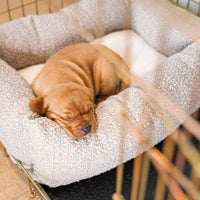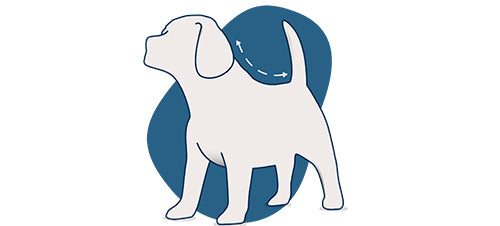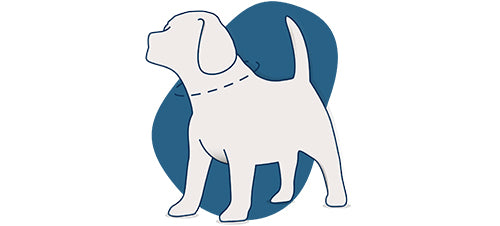In the modern world of selfies and Instagram stories, it perhaps shouldn’t come as much of a surprise that the sight of dogs and pups of all sizes parading around in their very own coats, winter sweaters and doggy boots is becoming increasingly more common. This trend has led to a broader range of dog clothing items available on the market, alongside constant question marks over whether or not it’s deemed ethically and morally acceptable to give your dog their own wardrobe.
In this blog, we investigate whether it’s ethical to dress up your dog, ask if dog coats are actually an essential item for dog owners and discover why your dog might genuinely enjoy wearing clothes.
Why Does My Dog Like Wearing Clothes?
Believe it or not, it’s not completely unheard of for your furry friend to feel more relaxed in clothing. It’s often assumed that owners are only dressing up their dog for their own benefit, but it’s perfectly plausible that it’s actually to benefit their little bundle of joy instead. If your dog appears to be happier or more at ease when they’re wearing clothes, there’s likely to be an underlying reason for this.
Reasons why your dog may be happy wearing clothes include:
- Warmth - Whether it’s for winter walks or simply for feeling comfortable around the house, it could be the case that your dog simply requires a little extra warmth. Although this is something that can be common in short-haired dogs, this can also apply to dogs with long hair. However, it’s important to be wary of doing this with all dogs regardless of their hair length, as they can overheat if they exercise in clothing or are in the same piece of clothing for too long
- Relaxation - You may assume that stress and anxiety only affect humans, but dogs need to feel relaxed to the same degree as we do. It’s been suggested that wearing clothes can make dogs feel more positive and at ease. Anti-anxiety dog coats are the solution to this. These coats are specially designed to feel like a gentle hug around your dog and can act to calm them down and decrease feelings of anxiety, particularly during periods of loud background noise, such as Bonfire Night, New Years Eve and even when you just want to use the vacuum cleaner.
- Attention - It’s upsetting to think that your dog would ever begin to feel like they’re not getting enough attention, but if they’ve associated dressing up with seeing more fuss from humans, it could be something they thrive on. Dogs may enjoy being dressed up for Halloween, Christmas, Valentine’s Day, Easter and other celebrations throughout the year, however, you may be less inclined to do this at other times. This could result in your doggo feeling less special when they are not in costume, missing the extra attention they may have received.
Do Dogs Need Coats?
If you’re interested in dressing up your dog or not, you may be tempted to put a coat on them during winter. This is sometimes differentiated from other cases of dressing your dog up, as it may be more necessary if they’re short-haired and express signs of struggling through the weather during colder months of the year.
Depending on the climate in which you live, as temperatures drop, there may eventually be a point where it’s unfair or unsafe for your dog to be out in the cold for too long. It’s at this point that they need to wear a coat. You may also look at decreasing the time they spend on walks and choosing warmer times of the day to take them out as extra measures if they continue to show signs of unhappiness in the cold.
When Should A Dog Wear A Coat?
For a lot of long-haired breeds, there shouldn’t be a problem with them walking without a coat in cold weather as long as it doesn’t drop below freezing. Short-haired breeds are more likely to need a coat at different times of the year, as they may even feel cold during the spring or autumn months. Although you’ll need to be more wary of your dog getting cold if it has short hair, this doesn’t mean that it always needs to wear a coat when outdoors, as this could lead to dangerous overheating during the summer.
Every dog is different, so it would be advisable to keep a close eye on your dog and monitor how they react to the changing weather. If they show clear signs of being cold such as shivering or acting hesitant around going outside, it may be best to try out a coat during walks until the weather returns to being a more reasonable temperature.
The overall consensus for your dog wearing any item of clothing is that it’s perfectly fine as long as it doesn’t upset or harm them in any way. Of course, if they require additional heat, comfort or relaxation, you may even be helping your furry friend by putting a coat on them or dressing them in another item of clothing.









































































































